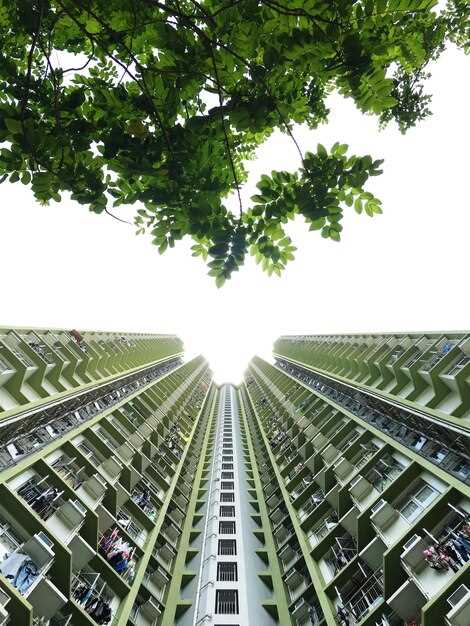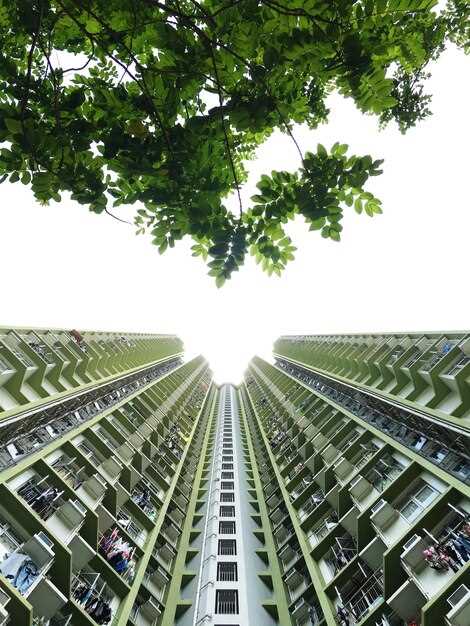Enhancing urban air quality can begin by implementing smart green technologies such as green roofs and vertical gardens. These technologies not only beautify city landscapes but also actively absorb airborne pollutants. Studies indicate that green roofs can reduce particulate matter by nearly 30%, which creates cleaner air for urban residents.
Incorporating electric public transportation is another powerful strategy. Cleaner transit systems, including buses and trains powered by renewable energy, directly lower urban carbon emissions. Cities such as Oslo and Shenzhen have already taken significant leaps in electrifying their public fleet, experiencing a marked decline in pollutants like nitrogen oxides (NOx) within a few years.
Local governments should prioritize investments in air monitoring technology to gather precise, real-time data. By deploying networks of smart sensors across various districts, cities can identify pollution hotspots and tailor interventions accordingly. Reports suggest cities using data-driven strategies see a 10-15% improvement in air quality, reflecting the potential of technology-driven environmental management.
Integrating Green Infrastructure in Urban Planning

Employ urban green spaces as a foundational strategy to enhance air quality, incorporating parks, green roofs, and vertical gardens throughout city landscapes. These elements naturally filter and reduce airborne pollutants, making them essential in urban designs aimed at sustainable living. Implement a network of green corridors to connect various portions of the city, enabling better airflow and heat reduction. Target areas with high pollution levels for the development of micro-forests or tree-lined streets, which can significantly absorb pollutants like PM2.5 and nitrogen dioxide.
Prioritize the use of permeable surfaces in urban construction projects to manage stormwater effectively. Such surfaces prevent runoff from carrying pollutants into waterways, while also supporting urban vegetation. Integrate biophilic design principles in buildings to improve indoor air quality and promote occupant well-being, using natural ventilation and materials that reduce the need for artificial air conditioning.
Facilitate stakeholder collaboration, including city planners, architects, ecologists, and local communities, to ensure sustainable implementation. This ensures that local biodiversity is supported while meeting urban air quality goals. Encourage policy changes that mandate the inclusion of green infrastructure in new developments, incentivizing builders and developers to adopt eco-friendly technologies.
Capitalize on data-driven technologies to assess air quality impacts of proposed plans. Use drones and sensors to collect real-time data on pollution levels, enabling more precise planning and timely adjustments. Educate citizens through initiatives that highlight the benefits of green infrastructure and promote community involvement in maintenance and operational tasks, ensuring their sustainability.
Maximizing the Potential of Urban Green Spaces
Consider the strategic planting of native trees and shrubs, as they significantly enhance air purification by absorbing pollutants and releasing oxygen. Opt for species well-suited to the local climate to reduce maintenance costs and increase longevity. Urban planners should prioritize these native plants in public parks and along roadways to boost air quality effectively.
Incorporate vertical gardens and green walls on building facades. These innovations not only beautify cityscapes but also actively filter the air. Research indicates that such installations can reduce particulate matter by up to 30%, creating healthier environments for urban dwellers. Building owners and city councils should collaborate to integrate these features in new constructions and refurbishments.
Create interconnected green corridors across cities to promote biodiversity and facilitate the movement of air pollutants away from populated areas. Such corridors can also serve as recreational paths for residents, offering a dual benefit. Planners should involve ecologists to ensure these corridors are designed to maximize plant diversity and ecological connectivity.
Encourage community-based urban gardening projects. These initiatives provide more than just fresh produce; they foster a sense of ownership and care for the environment, making residents active participants in air quality improvement. Local governments can support these movements by offering incentives like tax reductions or grants for community garden setups.
Invest in smart infrastructure that monitors and manages green spaces. Implement technology such as IoT sensors to track soil moisture, pollution levels, and plant health, ensuring optimal growth conditions. This data-driven approach enables precise intervention, enhancing the effectiveness of green spaces in air quality management.
- Strategic planting of native species
- Integration of vertical gardens on buildings
- Development of green corridors for biodiversity and air movement
- Encouragement of community urban gardening
- Investment in smart infrastructure for monitoring
These strategies, when implemented thoughtfully, can transform urban areas into cleaner, more sustainable spaces that contribute to overall public health and wellbeing.
Implementing Green Roof Technology
Install lightweight green roof systems to reduce urban heat and improve air quality. Prioritize modular systems for ease of installation and maintenance, helping cities like Chicago, which saved an estimated 3.6 million kWh annually from reduced cooling costs due to such roofs. Consider the following steps:
- Feasibility Assessment: Evaluate roof load-bearing capacity and local climate conditions. Cities like Berlin encourage initial assessments to guide municipal green roof programs.
- Selection of Plant Species: Choose low-maintenance plants like sedums, which thrive in diverse climates. A study in Toronto showed that sedum-based green roofs reduced stormwater runoff by up to 70%.
- Professional Collaboration: Engage with architects and urban planners experienced in green roofing. Singapore has successfully integrated these experts to mitigate its urban island heat effect.
- Incentive Programs: Implement tax incentives or rebates to encourage building owners to adopt green roofs. New York City’s successful tax abatements resulted in a growth of green rooftops citywide.
- Monitoring and Maintenance: Regularly inspect and maintain the green roofs to ensure plant health and system efficiency. Maintenance protocols like those used in London ensure sustained air quality benefits.
Adopt these strategies to harness the full potential of green roofs in urban environments, contributing significantly to reduced pollution levels and cooler cities.
Designing Urban Forest Initiatives
Start with assessing available spaces and prioritizing areas with high pollution levels or limited green coverage. Engage local communities by encouraging participation in tree-planting events and workshops. This not only fosters ownership but also ensures proper maintenance of the green spaces.
Select diverse, native tree species that are well-suited to local climate conditions and capable of thriving in urban environments. A diverse mix enhances biodiversity, promotes resilience, and maximizes air quality benefits.
Integrate technology by using drones for seed planting and monitoring tree growth. Sensor technologies can track air quality improvements, while apps can offer educational resources and enable citizen engagement.
Collaborate with urban planners and environmental experts to strategically position urban forests. This maximizes the capture of pollutants and provides better shade and cooling effects, which are vital during heatwaves.
Secure funding through partnerships with local businesses, non-profits, and governmental grants. Consider innovative financing methods like green bonds to ensure sustainable funding streams.
Implement clear maintenance plans to address tree health, pest management, and growth assessments. Regular updates to these plans will adapt to changing urban conditions and ensure long-term success.
Measure success with clear metrics such as pollutant reduction, tree survival rates, and community engagement levels. Transparently share findings to build public trust and support for expansion.
Optimizing Public Transport Systems
Integrate electric buses and trams into your city’s public transport infrastructure to significantly reduce emissions. These vehicles offer zero tailpipe pollution, dramatically improving urban air quality. Consider the success of cities like Shenzhen, where the transition to an entirely electric bus fleet reduced carbon dioxide emissions by 48%. Implementing a phased upgrade strategy ensures budgetary feasibility while gradually transforming the transit system.
Enhancing real-time data systems offers passengers up-to-date information, increasing the appeal of public transport. Utilize GPS data to optimize routes for efficiency and reliability. A study from the University of California revealed that optimized routing could improve service efficiency by up to 20%. Enhance passenger experience through user-friendly apps that provide schedules, route maps, and real-time updates.
Tackle overcrowding by adjusting service frequency based on passenger demand patterns. Analyzing peak usage times with data analysis tools can help modify schedules to offer more frequent services during high-demand periods, reducing discomfort and travel time. Encourage modal shifts from private vehicles to public transportation by improving convenience and accessibility.
| Strategy | Impact | Implementation Example |
|---|---|---|
| Electric Vehicles | Reduces emissions by 48% | Shenzhen, China |
| Real-time Data Systems | Increases efficiency by 20% | University of California Study |
| Demand-Based Scheduling | Decreases overcrowding and wait times | City-specific analysis tools |
Finally, promote public-private partnerships to drive innovation in public transport technology. Collaborations with tech companies can lead to the development of advanced systems that streamline operations and enhance user experiences. Encourage cities to host hackathons and innovation challenges to address specific urban transport issues, fostering a culture of sustainable urban mobility solutions.
Adopting Innovative Air Purification Technologies

Prioritize the installation of green walls and roofs in urban settings. These natural structures not only beautify the environment but also play a significant role in air purification by absorbing pollutants and carbon dioxide. According to a study by the National Center for Atmospheric Research, green walls can remove up to 9.3 tons of air pollutants annually in a city like New York.
Implement smart air filtration systems in commercial and residential buildings. Modern systems like the HEPA filter technology or electrostatic precipitators can capture over 99% of harmful particles, ensuring cleaner indoor air. The Environmental Protection Agency has highlighted that improved air quality can lead to a 10% reduction in asthma-related emergencies.
Encourage the use of photocatalytic oxidizers. These devices utilize ultraviolet light to break down pollutants at a molecular level, effectively neutralizing harmful substances such as volatile organic compounds (VOCs) and nitrogen oxides, common culprits in urban pollution.
| Technology | Key Benefits | Impact |
|---|---|---|
| Green Walls and Roofs | Absorbs CO2, enhances aesthetics | Removes up to 9.3 tons of pollutants annually |
| HEPA Filters | 99% particle capture | Reduces asthma emergencies by 10% |
| Photocatalytic Oxidizers | Breaks down VOCs and nitrogen oxides | Neutralizes harmful substances |
Collaborate with tech startups focusing on air quality monitoring and real-time data analysis. By integrating IoT sensors and AI algorithms, cities can identify pollution hotspots and implement targeted measures effectively. Recent advancements have demonstrated that real-time data can optimize urban planning and mitigate pollution sources by 15-20%.
Deploying Smart Air Monitoring Systems
Embrace real-time data collection by deploying smart air monitoring systems equipped with advanced sensors to track pollutants like PM2.5, NO2, and CO2. Install these systems on rooftops, street poles, and public transport for comprehensive city coverage. Utilize the data gathered to develop actionable plans for reducing pollution in critical areas.
- Identify Hotspots: Use sensor data to pinpoint pollution hotspots within urban areas and implement targeted measures such as restricting vehicular traffic or enhancing green spaces in those zones.
- Engage the Community: Share real-time air quality data with the public through mobile apps and websites, empowering citizens to make informed decisions and participate in pollution reduction initiatives.
- Collaborate with Tech Firms: Partner with technology companies to maintain and improve the air monitoring infrastructure, ensuring access to the latest sensor technology and data analytics tools.
- Implement Regulatory Measures: Utilize collected data to enforce environmental regulations more effectively, setting pollutant thresholds based on real-time insights and trends.
- Integrate with Urban Planning: Incorporate air quality data into urban development plans, ensuring new infrastructure projects don’t contribute to pollution levels and adhere to sustainable standards.
By leveraging smart air monitoring systems, cities can precisely measure air quality and implement strategic interventions, fostering a healthier urban environment. Encourage continuous innovation in sensor technology and data analytics to enhance these efforts and secure a cleaner future for urban populations.
Utilizing Photocatalytic Coatings for Buildings
Apply photocatalytic coatings to building exteriors to significantly reduce urban air pollution levels. These coatings contain titanium dioxide, which, when exposed to sunlight, breaks down pollutants like nitrogen oxides and volatile organic compounds, converting them into harmless substances such as water and carbon dioxide.
Select the right type of photocatalytic coating based on the building material. For concrete and masonry, opt for water-based solutions that easily adhere to porous surfaces. Glass facades require specially formulated coatings that ensure transparency and aesthetic appeal. Regular maintenance, such as annual cleaning, maximizes their effectiveness.
Consider implementing these coatings in urban areas with high traffic density to address pollution hotspots effectively. The longevity of photocatalytic activity depends on environmental conditions, yet studies have observed up to a 50% reduction in pollutants over several years. Encourage collaboration between local governments and property developers to incentivize widespread adoption through subsidies or tax benefits.
Integrate monitoring systems to measure pollution reduction and adjust strategies accordingly. These insights can help drive policy changes and promote similar green technologies across other urban areas. Prioritize sustainable manufacturing practices for these coatings to enhance environmental benefits, establishing a holistic approach to urban air quality improvement.
Integrating Nature-Based Solutions with Technology
Transform urban air quality by combining urban forestry initiatives with sensor technology. Equip city planners with data from IoT-enabled air quality sensors strategically placed around urban green spaces. These sensors provide real-time data on pollution levels, helping cities identify areas requiring additional greening efforts.
Implement green walls and roofs equipped with automated irrigation and climate-control systems. When integrated with weather forecasting technologies, these systems optimize water use and enhance plant performance, increasing their ability to filter air pollutants. Real-time monitoring allows for adjustments based on local environmental conditions.
Encourage the development of urban parks and gardens with smart irrigation systems driven by artificial intelligence. Using data analytics, these systems determine the most efficient water and resource distribution to support optimal plant growth, thus maximizing their air-cleaning capacity.
Moreover, invest in research partnerships focusing on hybrid solutions, integrating advanced bioengineering with established botanical knowledge. Projects can explore genetically modified plants designed for urban environments, engineered to improve pollutant absorption rates. These bespoke solutions can better withstand urban stresses, providing longer-term benefits to air quality.
Finally, engage communities through tech-enabled educational platforms promoting involvement in local greening projects. Augmented reality apps can visualize the impact of proposed green infrastructures, encouraging public participation and ongoing support, culminating in healthier urban ecosystems.
Encouraging Community Participation in Air Quality Projects
Provide local communities with real-time air quality data. Install easy-to-understand digital displays in public areas that show air pollution levels and offer actionable advice on reducing exposure during high-pollution periods. This approach raises awareness and empowers individuals to make informed decisions, making air quality improvement a shared responsibility.
Organize workshops and interactive sessions that educate residents about green technologies and their role in improving air quality. Encourage participants to share ideas for local initiatives such as increasing green spaces or promoting carpooling. Such engagement not only educates but also fosters a sense of ownership and collaboration among community members.
Initiate local air quality monitoring projects where residents can volunteer. Provide communities with low-cost, portable air sensors to collect data. This citizen-driven data collection can help pinpoint pollution sources, offering valuable insights for targeted intervention and motivating more residents to contribute to cleaner air.
Implement community-run incentive programs that reward eco-friendly practices. Offer subsidies for families who install air purification systems or support those who choose alternative transportation. Creating visible and tangible benefits for individual efforts can significantly increase community involvement.
Leverage social media platforms to create online groups where community members can share tips, stories, and progress on air quality initiatives. This digital community can enhance offline efforts by providing a platform for continuous engagement and mutual encouragement, ensuring consistent participation and spreading innovative ideas across different neighborhoods.
Video:

Bridging nature and technology to produce cleaner air in cities | Liang Wu | TEDxGrandPark
Bridging nature and technology to produce cleaner air in cities | Liang Wu | TEDxGrandPark
Q&A:
How can vertical gardens specifically improve air quality in urban areas?
Vertical gardens can enhance air quality by increasing green space in areas where traditional gardens are not feasible. They can absorb carbon dioxide and pollutants while releasing oxygen, thus contributing to a cleaner atmosphere. Additionally, they can help cool the air, reducing the urban heat island effect, which indirectly benefits air quality.
What role do electric vehicles play in improving urban air quality?
Electric vehicles help reduce air pollution in cities by eliminating tailpipe emissions, which are a significant source of urban air pollutants such as nitrogen oxides and particulate matter. By decreasing reliance on gasoline and diesel vehicles, electric vehicles contribute to cleaner urban air and a reduction in health risks associated with air pollution.
Are there any challenges associated with implementing green tech innovations in cities?
Implementing green tech innovations in urban areas can face several challenges, including high initial costs, the need for infrastructure development, and potential resistance from stakeholders accustomed to traditional methods. Additionally, technological advancements require skilled labor for installation and maintenance, which may not always be readily available. Overcoming these challenges often requires coordinated efforts from governments, industries, and communities.
How do smart city technologies contribute to better air quality?
Smart city technologies, such as IoT sensors and real-time data analytics, enable more efficient monitoring and management of air quality. They provide valuable insights and allow for timely interventions, such as traffic flow adjustments and pollution source identification. By optimizing urban operations, smart technologies help maintain healthier air levels.
Can community involvement make a significant difference in improving urban air quality?
Yes, community involvement can be a powerful tool in enhancing urban air quality. Public awareness and participation encourage sustainable practices, such as increased use of public transport, recycling, and adopting renewable energy solutions. Communities can also push for green policy changes and monitor local air quality, fostering a collective effort towards a healthier environment.
